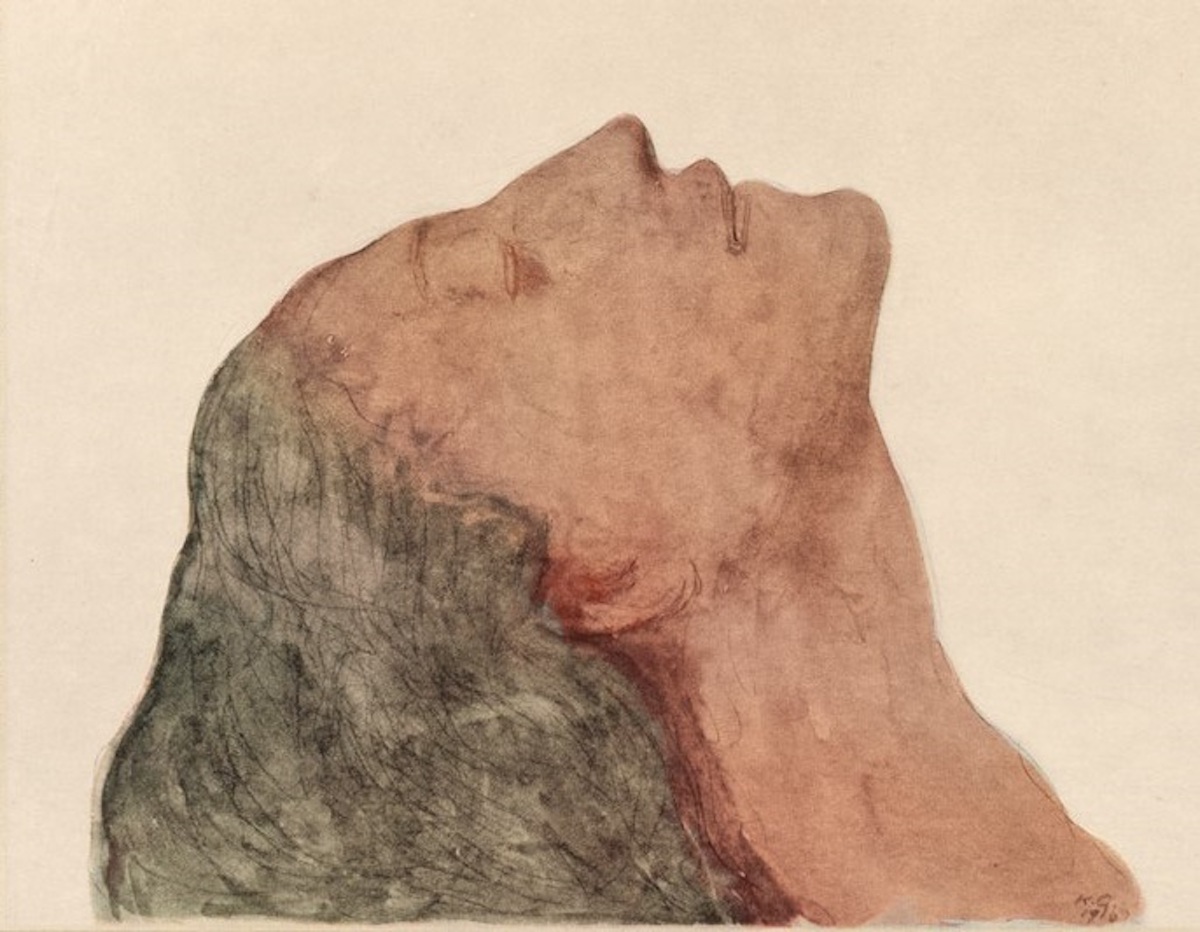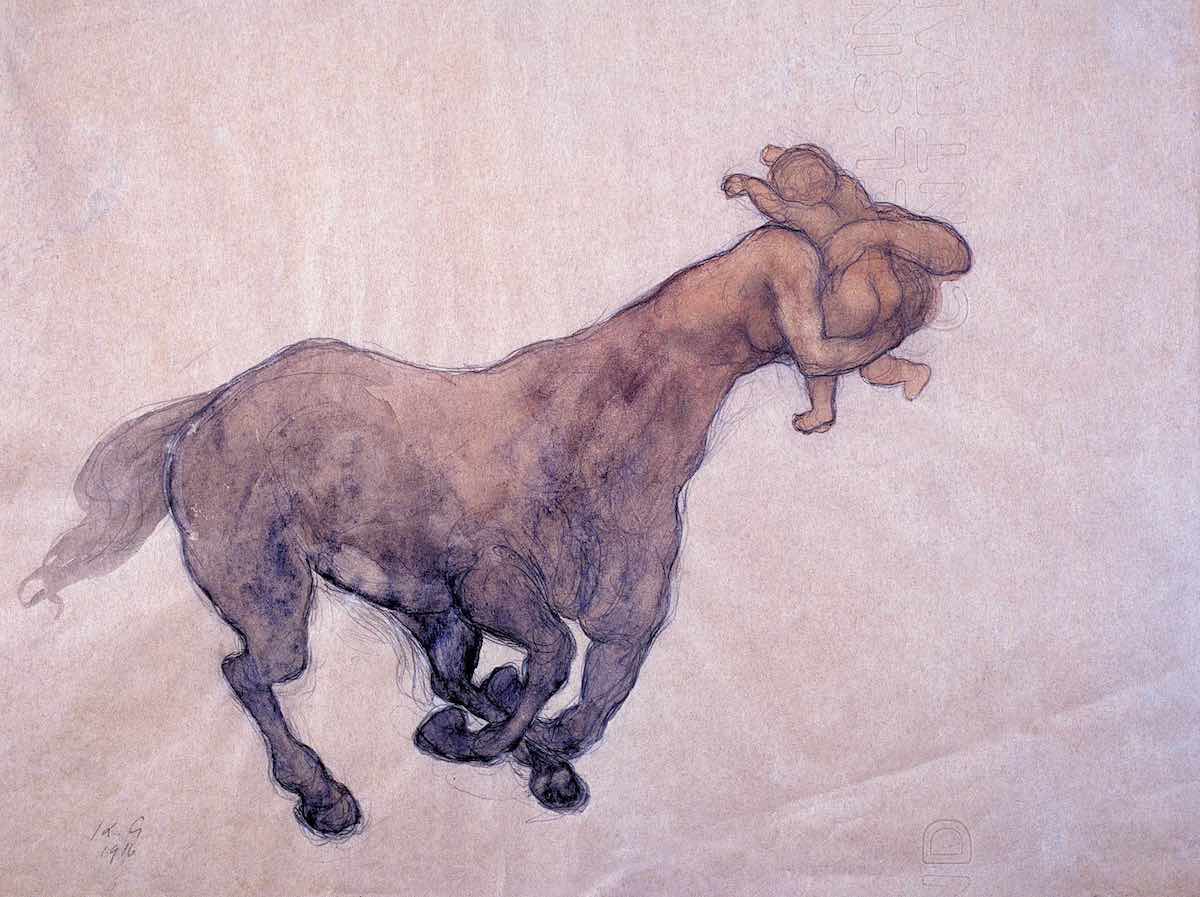“Speak to us of Beauty”
– Kahlil Gibran, The Prophet
In 1919, Lebanese-American artist, poet and philosopher Kahlil Gibran (January 6, 1883–April 10, 1931) published the collection Twenty Drawings, the first and only time a selection of his paintings had appeared in print.
Gibran’s illustrations are inextricable parts of his life and literary career, forming another ray of his poetic vision. They accompany his paeans to wisdom and beauty, such as The Prophet, which conveys the yearning for a Unity of Being that can only be achieved through love, and The Madman, in which life is “a human chaos, a nebula of confused elements… a green seed of unfulfilled passion, a mad tempest that seeketh neither east nor west, a bewildered fragment from a burnt planet.”
For Gibran beauty was both “way and guide”. His pictures bear witness to his belief that “we are creatures of form and colour”.
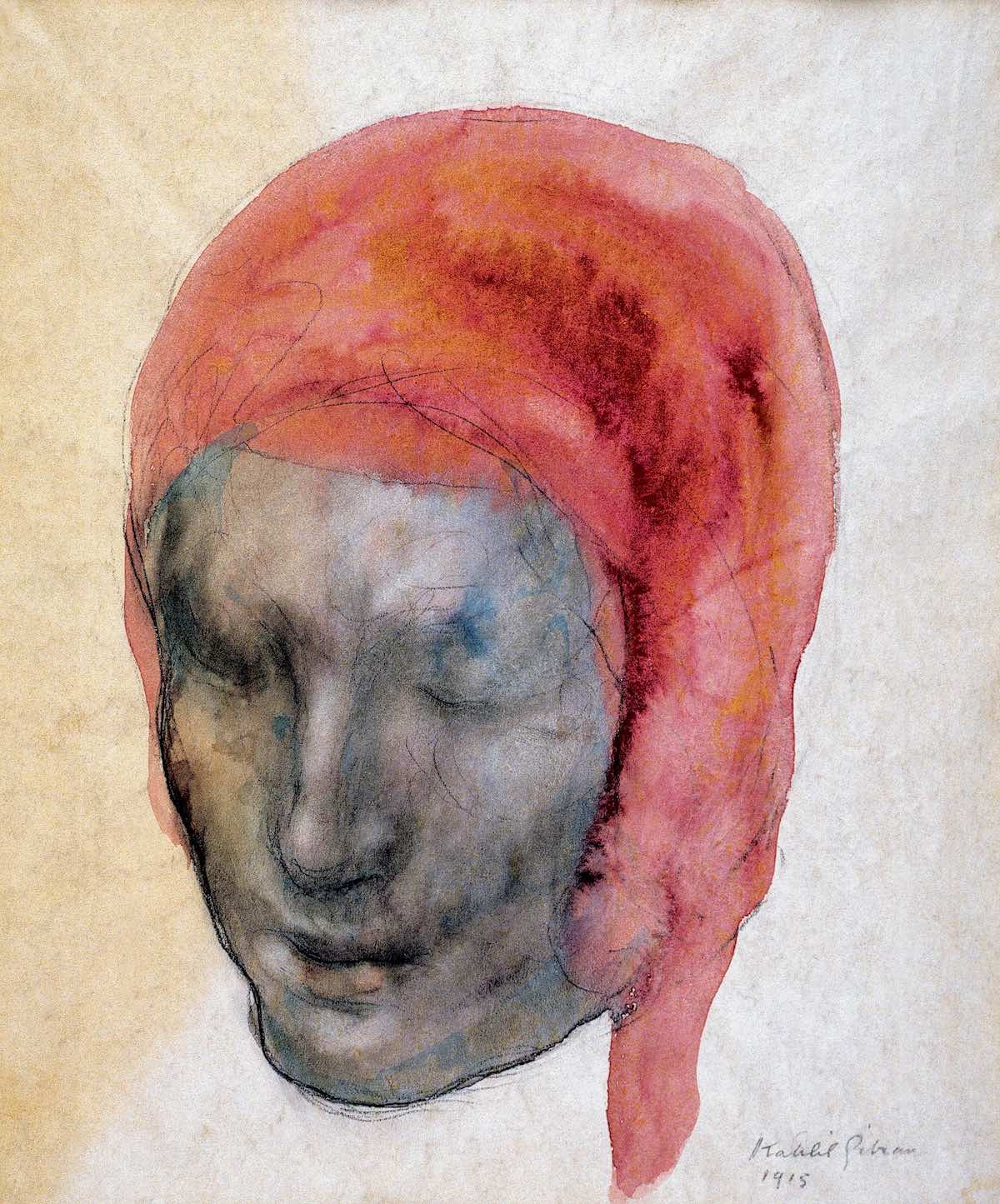
The Blind by Khalil Gilbran
Gilbran was no amateur painter. He studied at the Académie des Beaux-Arts in Paris and trained with some of the best known artists of the beginning of the 19th century, including Auguste Rodin, who is said to have called him “the William Blake of the twentieth century”, and influenced by French symbolist painter Odilon Redon. In 1908, Gibran was awarded the silver medal at the Salon du Printemps.
The site Kahlil Gibran has more on his influences:
Close to Islam and to Eastern religions, Gibran grew up in a family of Maronite faith (that is, Christian with Eastern rites), but would later develop a syncretic credo that was totally personal and original, and by many defined “Gibranism.” Art and poetry for Gibran were never an intellectual exercise, rather, they were a spiritual one, a means of elevating man to a knowledge of the divine.
…
Beauty, as may be read in the eponymic sermon of The Prophet, must be “way and guide” in the existence of each one of us. Better still, it coincides with life itself – because “where beauty is, there are all things.” It is, thus, the arbiter and the essence of Gibran’s art, an art that becomes a mystical-aesthetic experience, a pathway to the original and absolute, ineffable and eschatological truths of man. When Gibran creates, he is inspired by a deep love for and acknowledgement of beauty, and this allows him to express his universal message to all of humanity. The translucent purity of his paintings leads towards a more sacred place, the heart itself of the human being, because “every picture is a portrait, a self-portrait.” Gibran the artist, hence, is situated at the crossroads between East and West, without necessarily belonging to either one, between symbolists and visionaries, between classicists and romantics, and it is precisely in the fusion of these opposing tendencies, in the reconciliation of opposites, that he comes to surpass schools, faiths and traditions.
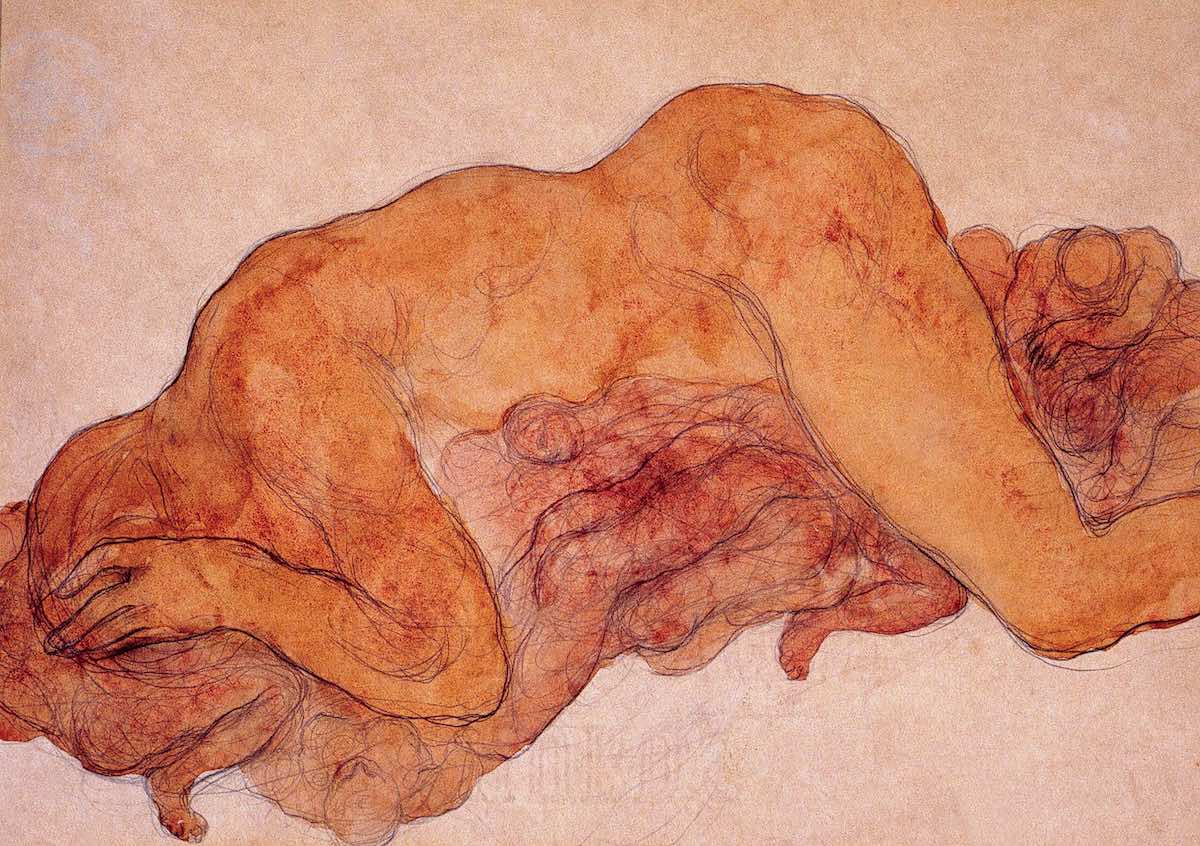
The Mountain, c. 1916 – Wash drawing
“There’s something big in me and I can’t get it out it’s a silent greater self, sitting and watching a smaller me do all sorts of things. All the things I do seem false to me; they are not what I want to say. I am always conscious of a birth that is to be. It’s just as if for years a child wanted to be born and couldn’t be born. You are always waiting, and you are always in birth pain. Yet there is no birth.”
– Gilbran

Kahlil Gibran, Uplifted Figure, 1915. Pencil and watercolor on paper
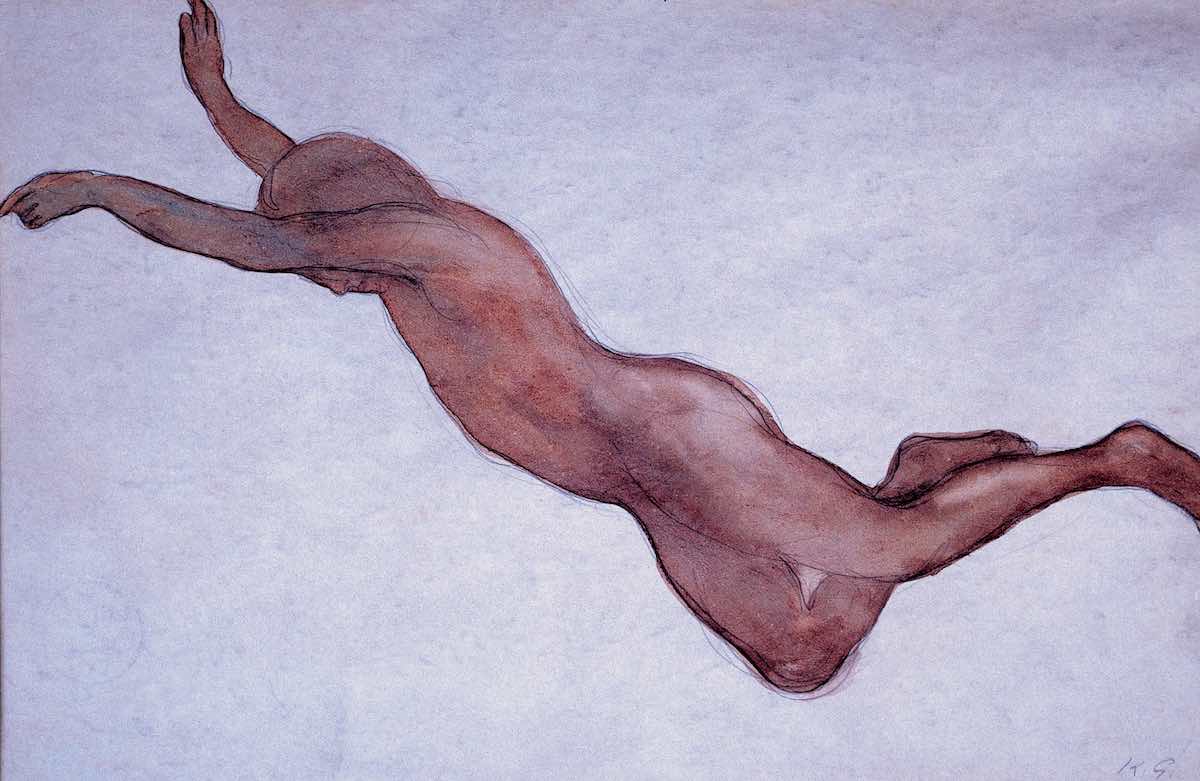
Flight by Khalil Gilbran
Writing in the book’s introduction, Alice Pearl Raphael looks at how Gibran’s style evokes his poetic world:
The level of his painting is very delicate—plane suggesting another plane in the most subtle gradation so that at first there seems to be but little colour and then comes a swift realization that it is all colour—only imperceptibly diffused. In one or two of the studies like the sombre picture of the man with the cap, more vivid reds and blues are introduced and a certain greenish blue, wholly of the East, reappears constantly in his studies of definite types. But in his more profound interpretative work, the gradation of colour is delicate in the extreme. He uses colour to reveal his form unlike many painters who lose their sense of form in the pursuit of colour; that is another reason why his paintings are so suggestive of the art of the sculptor.
This impression is conveyed most powerfully in the study of a woman’s head, the frontispiece to this volume, a painting which is the most complete exposition of the art of Gibran. The head is thrown back and seems to rest upon a white background that is yet not exactly white; it is the colour of the sea at an infinite distance when colour is no longer colour but merely light. The head, lying upon this luminous ground is so delicately delineated that the throat veins almost quiver and the pale lips are about to move. And as we look upon the fine profile, the sensitive, highly arched nose and the tender, compassionate mouth, it seems as if this woman’s head had arisen out of those deeper waters which we call the sea of memory, as if indeed
“Our souls have sight of that immortal sea from whence we came.”

The Waterfall
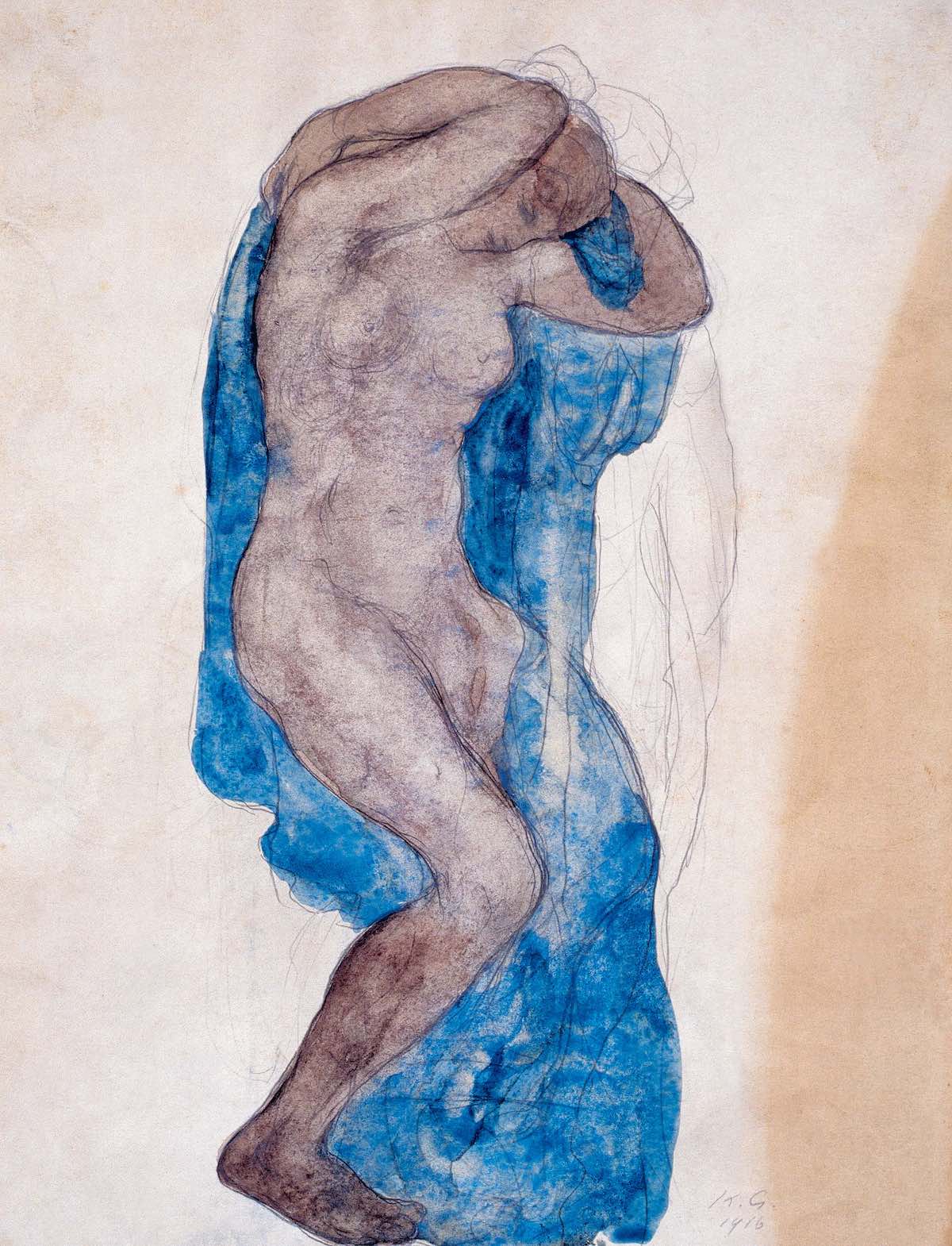
Beauty is the medium, “beauty is a path that leads to self self-slain”, to our deepest being. Only by filtering human existence through the icon of beauty are we able to perceive divine essence.

Would you like to support Flashbak?
Please consider making a donation to our site. We don't want to rely on ads to bring you the best of visual culture. You can also support us by signing up to our Mailing List. And you can also follow us on Facebook, Instagram and Twitter. For great art and culture delivered to your door, visit our shop.
